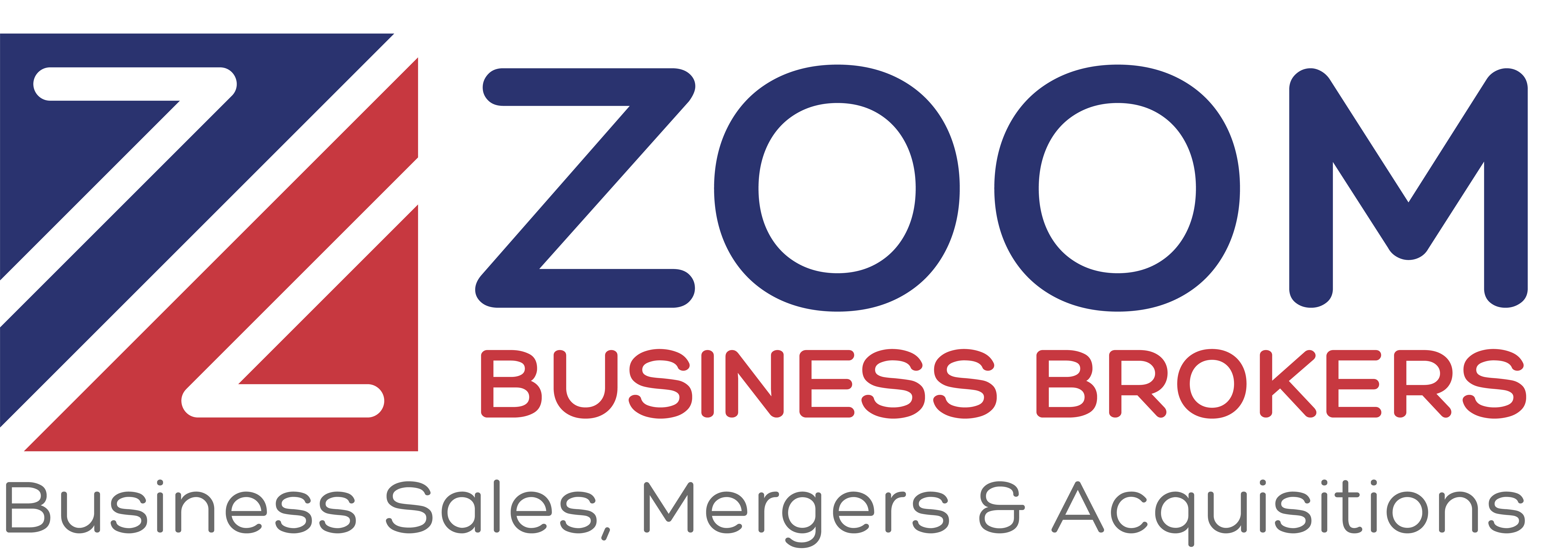
Why Your Company Needs a Physical
Many executives of both public and private firms get a physical check-up once a year. Many of these same executives think nothing of having their investments checked over at least once a year – probably more often. Yet, these same prudent executives never consider giving their company an annual physical, unless they are required to by company rules, ESOP regulations or some other necessary reason.
A leading CPA firm conducted a survey that revealed:
- 65% of business owners do not know what their company is worth;
- 75% of their net worth is tied up in their business; and
- 85% have no exit strategy
There are many obvious reasons why a business owner should get a valuation of his or her company every year such as partnership issues, estate planning or a divorce; buy/sell agreements; banking relationships; etc.
No matter what the reason, the importance of getting a valuation cannot be over-emphasized:An astute business owner should like to know the current value of his or her company as part of a yearly analysis of the business. How does it stack up on a year-to-year basis? Value should be increasing not decreasing! It might also point out how the company stacks up against its peers. The owner’s annual physical hopefully shows that everything is fine, but if there is a problem, catching it early on is very important. The same is true of the business.
Lee Ioccoca, former CEO of the Chrysler Company said in commercials for the company, “Buy, sell or get-out-of-the-way,” meaning standing still was not an option. One never knows when an opportunity will present itself. An acquisition now might seem out of the question, but a company owner should be ready, just in case. A current valuation may be as good as money in the bank when that “out of the question” opportunity presents itself.
One never knows when a potential acquirer will suddenly present itself. A possible opportunity of a lifetime and the owner doesn’t have a clue what to do. Time is of the essence and the seller doesn’t have a current valuation to check against the offer. By the time it takes to gather the necessary data and get it to a professional valuation firm, the acquirer has moved to greener pastures.
Having a company valuation done on an annual basis should be as secondary as the annual physical – it really is the same thing – only the patients are different.

Should You Be Selling Your Company…Now?
The answer to the question asked in the title is, “It all depends!” There are all sorts of studies, surveys and the like suggesting that as more and more “baby-boomers” reach retirement age, the market will be flooded with companies for sale. The consensus is that with these privately-held company owners reaching and nearing retirement age, the time to sell is now. In one survey, 57 percent of business owners said that their age was the motivating factor for exiting their business. In another one, 75 percent of owners with revenues between $1 million and $150 million stated that they looked to sell within the next three years. Reading all of this information, one gets the feeling that over the next few years almost every privately-held business will be on the market.
While there are always going to be those who feel that Armageddon is coming, or that all of these companies are going to be on the market on the day that baby-boomer owners hit 65, there are some compelling reasons to sell your business now – and some reasons that may compel you to hold off. One good reason for any owner to sell “now” is that it just may be time to “smell the roses,” as they say. After running the business for so many years, “burn-out” is a very valid reason for selling. Many business owners may have, without actually realizing it, let their business slide a bit. You lose a customer or client here and there and don’t make the effort to replace them. Or, you don’t make the effort to check back with the supplier who has promised to give you a better price on an important product or service. It’s too easy to stick with the one you have been dealing with for years, even though you know the price is probably too high.
On the flip side, it is also easy to convince yourself that business is down a bit this year, maybe due to the current economy or recent legislation, likely reducing the value of the company. Maybe waiting until things pick up a bit and values increase would be a good idea. Thirty-five percent of business owners, in one survey, said they were going to hold off selling because they felt their business would continue to grow and therefore, hopefully, also increase in value. Unfortunately, no one can predict the future. New competitors may enter your market. Foreign competition may move in. You may not have the energy or that “fire-in-the-belly” you once had, so the business may slide even further.
You could also point your finger to the tightening of credit and ask, “How is a buyer going to finance the business?” Despite very low interest rates, borrowing money is now more difficult.
There is an old saying that the time to plan your exit strategy is the day you start running the business. Business owners can’t outgrow interest rates, legislative changes or aging. The time to sell is when you are ready to sell. The mere fact that you have read this far may be a sign that now is the time to sell. To learn more about current market trends, what your business might sell for, and what your next step might be, call a professional intermediary.
© Copyright 2015 Business Brokerage Press, Inc.
Photo Credit: slideshowmom via morgueFile
Read More
How Does Your Business Compare?

The value of a business is not strictly about its financial performance or the price someone is willing to pay for it. Numerous intangible factors, or value drivers, influence its worth. The evaluation of these drivers provides insight into the business’s potential for future growth and profitability, which are key considerations for potential buyers. This article aims to delve into some of these key value drivers, using a table to better illustrate their significance in the process of selling a business.
- Business Type: The demand for your business type significantly impacts its valuation. Businesses in high-demand sectors naturally command higher selling prices due to their appeal to a larger pool of potential buyers. Conversely, those in sectors with little demand may face challenges in attracting buyers, ultimately leading to a lower selling price. To improve this, consider diversifying or pivoting your offerings to align with high-demand sectors.
- Business Growth: High and steady business growth is a strong value driver. It signifies the company’s ability to grow its revenue and profitability over time. Steady growth is appealing to buyers as it suggests a high potential for future profitability. Conversely, low or inconsistent growth can devalue a business. To enhance growth, focus on effective business strategies, like market expansion and product innovation.
- Market Share: Businesses with a large and growing market share are seen as leaders in their sectors, making them attractive to buyers. Small or static market shares can limit a company’s attractiveness. To improve market share, consider investing in marketing and sales strategies that broaden your customer base and increase your competitive edge.
- Profits: Good, steady profits are one of the most straightforward indicators of a business’s health. They signal a successful business model and strong future potential. On the other hand, unsteady profits suggest instability and risk, decreasing the business’s appeal to buyers. Enhancing profitability may involve cost reductions, price adjustments, or efforts to boost sales.
- Management: An above-average management team adds value to a business by showcasing effective leadership and the potential for sustained growth. Understaffed or mediocre teams may devalue the business due to perceived inefficiencies or instability. Enhancing this value driver might mean investing in employee development, hiring key personnel, or improving management processes.
- Financials: Audited financials demonstrate a company’s commitment to transparency and accuracy, thus increasing buyer trust. Compiled or reviewed financials, although useful, may not inspire the same level of confidence. To improve this aspect, consider obtaining regular audits and maintaining meticulous financial records.
- Customer Base: A wide and growing customer base signifies market acceptance and the potential for stable future revenue. A fluctuating or narrow customer base may suggest instability or a limited market, decreasing business value. To grow your customer base, prioritize customer satisfaction, quality service, and effective marketing strategies.
- Litigation: A business with no litigation history in recent years is typically seen as less risky, adding to its value. On the contrary, regular litigation can decrease a business’s appeal due to potential legal costs and reputation damage. To maintain a clean litigation record, comply with legal requirements and manage disputes effectively.
- Sales: Good sales growth signifies a strong market presence and potential for future profits. No growth or low growth can decrease a business’s value. To enhance sales growth, invest in effective sales strategies and customer engagement.
- Industry Trend: Businesses operating in industries experiencing growth tend to attract higher valuations due to their future potential. If your industry is experiencing stagnant growth, this may negatively impact your business’s value. Staying on top of industry trends and adapting your business model to suit can help drive up your business’s value.
In conclusion, several factors or value drivers influence the selling price of a business. By understanding these drivers and strategically enhancing them, business owners can optimize their exit strategy and potentially maximize their selling price.

How Does Your Business Compare?
The art of selling a business extends beyond just financial figures; it incorporates various value drivers, key attributes or factors that can increase a business’s value and appeal to prospective buyers. Understanding these drivers, evaluating how your business measures up, and actively working to enhance your performance in these areas can significantly influence your business’s value and saleability.
- Business Type: The demand level for your business type is crucial. High demand equates to more potential buyers and a higher perceived value. Conversely, little demand can diminish your business’s attractiveness. If your business operates in a low-demand sector, consider diversifying your products or services to align with market trends and demands.
- Business Growth: A business demonstrating high and steady growth signals potential for further expansion, making it attractive to buyers seeking future profitability. Businesses with low growth can be seen as stagnant or riskier investments. Bolstering business growth can involve strategic initiatives, such as market expansion, diversification, and innovation.
- Market Share: Large and growing market share can indicate a strong competitive position, adding to your business’s appeal. Conversely, a small or stagnant market share may imply fierce competition or lack of differentiation. To increase market share, companies can focus on developing unique selling propositions, effective marketing strategies, and robust customer relationships.
- Profits: Profitability is an immediate attraction for buyers. Businesses with good, steady profits indicate a successful operational model and predictability, an aspect many buyers value. Unsteady profits can signify business instability. To stabilize and increase profits, businesses should analyze their revenue streams, cost structures, and pricing strategies for improvement opportunities.
- Management: An above-average, well-staffed management team can enhance a business’s value, suggesting effective leadership and operational efficiency. Understaffed management can give the impression of instability or poor organizational health. To improve this value driver, businesses may need to hire key personnel, develop existing staff, or optimize their organizational structure.
- Financials: Audited financials are a strong value driver, as they imply accuracy, transparency, and good governance. Conversely, merely compiled financials might raise doubts about the business’s financial practices. To improve this driver, businesses can invest in regular audits and uphold meticulous financial record-keeping.
- Customer Base: A wide, steadily growing customer base is a positive indicator of market acceptance and future revenue potential. In contrast, a non-steady customer base may hint at customer churn or market instability. To improve this driver, businesses should prioritize customer satisfaction and retention strategies, alongside efforts to attract new customers.
- Litigation: Businesses with no recent litigation history are seen as less risky, enhancing their appeal. Frequent litigation, on the other hand, could signal potential legal issues and associated costs, diminishing the business’s value. Keeping a clean litigation record involves adhering to all relevant laws, maintaining strong supplier relationships, and managing disputes effectively.
- Sales: Demonstrating good sales growth can reflect positively on a business’s market presence and revenue potential. Businesses with no or little sales growth may be seen as lacking momentum. To increase sales, companies can focus on enhancing their sales strategies, refining their product or service offerings, and improving customer relationships.
- Industry Trend: Operating in an industry experiencing good growth can increase a business’s attractiveness, as it suggests potential for future expansion and profitability. Businesses in industries with merely okay growth may be seen as less attractive. To ride on positive industry trends, businesses need to stay abreast of market developments and adapt their strategies accordingly.
In sum, the value drivers outlined above contribute significantly to a business’s overall appeal and potential sale price. As part of your exit strategy, recognizing and optimizing these drivers can make your business more desirable to prospective buyers, potentially leading to a higher sale price and a more successful business transition. Always remember to not just compare your business to others in general, but consider your direct competition and industry-specific standards. This nuanced understanding will better prepare you for the process of selling your business.
Read More
The Confidentiality Agreement
When considering selling their companies, many owners become paranoid regarding the issue of confidentiality. They don’t want anyone to know the company is for sale, but at the same time, they want the highest price possible in the shortest period of time. This means, of course, that the company must be presented to quite a few prospects to accomplish this. A business cannot be sold in a vacuum.
The following are some of the questions that a seller should expect a confidentiality agreement to cover:
- What type of information can and can not be disclosed?
- Are the negotiations open or secret?
- What is the time frame for which the agreement is binding? The seller should seek a permanently binding agreement.
- What is the patent right protection in the event the buyer, for example, learns about inventions when checking out the operation?
- Which state’s laws will apply to the agreement if the other party is based in a different state? Where will disputes be heard?
- What recourse do you have if the agreement is breached?
Obviously, executing an agreement does not mean a violation can’t occur, but it does mean that all the parties understand the severity of a breach and the importance, in this case, of confidentiality.
While no one can guarantee confidentiality, professional intermediaries are experienced in dealing with this issue. They are in a position to understand the extreme importance of confidentiality in business transactions as well as the devastating results of a breach in confidentiality. A professional intermediary will require all legitimate prospects to execute a confidentiality agreement.
A confidentiality agreement is a legally binding contract, enforceable in a court of law. It establishes “common ground” between the seller, who wants the agreement to be extensive, and the buyer, who wants as few restrictions as possible. It allows the seller to share confidential information with a prospective buyer or a business broker for evaluative purposes only. This means that the buyer or broker promises not to share the information with third parties. If a confidentiality agreement is broken, the injured party can claim a breach of contract and seek damages.
© Copyright 2015 Business Brokerage Press, Inc.
Photo Credit: pippalou via morgueFile
Read More